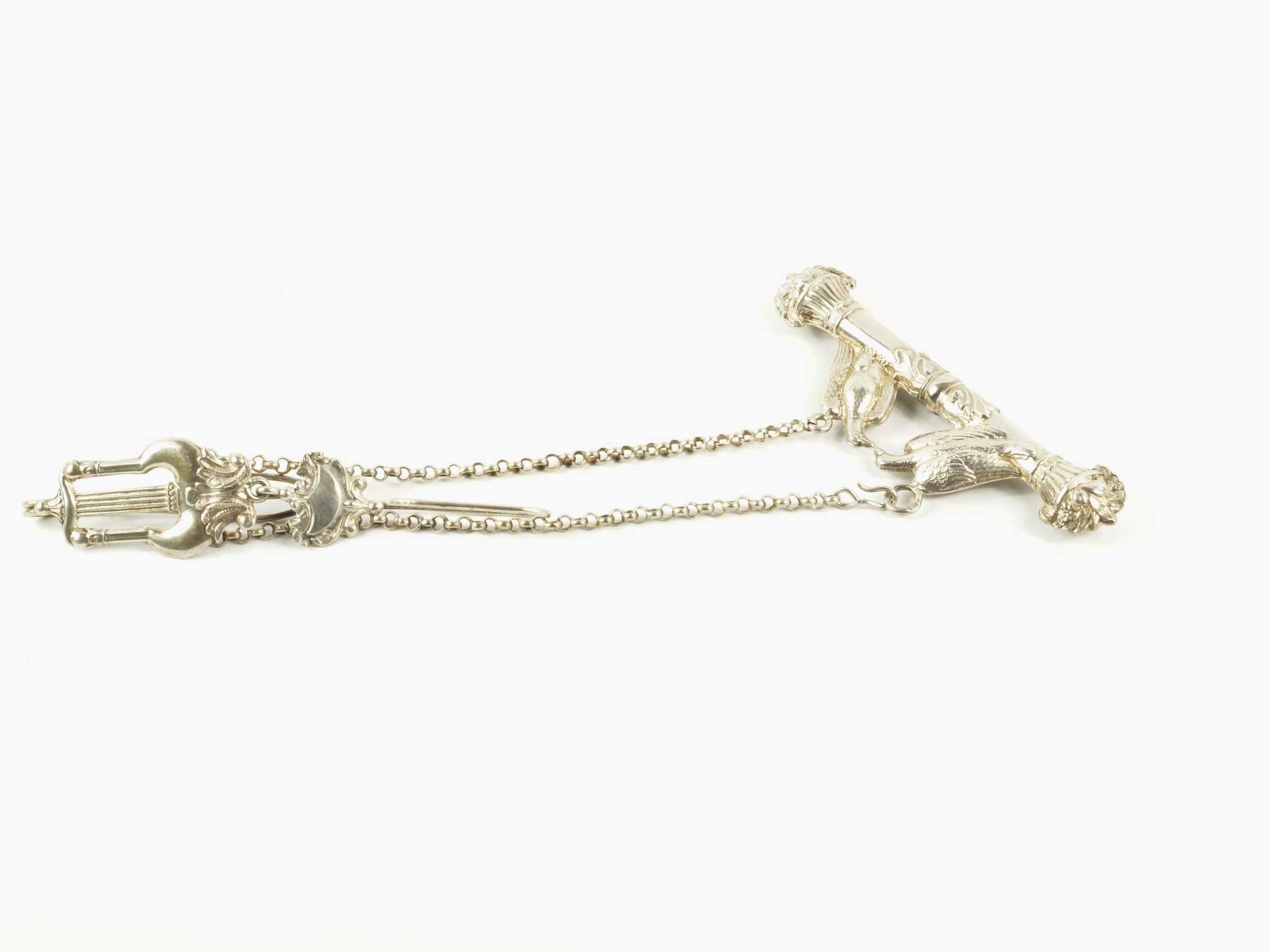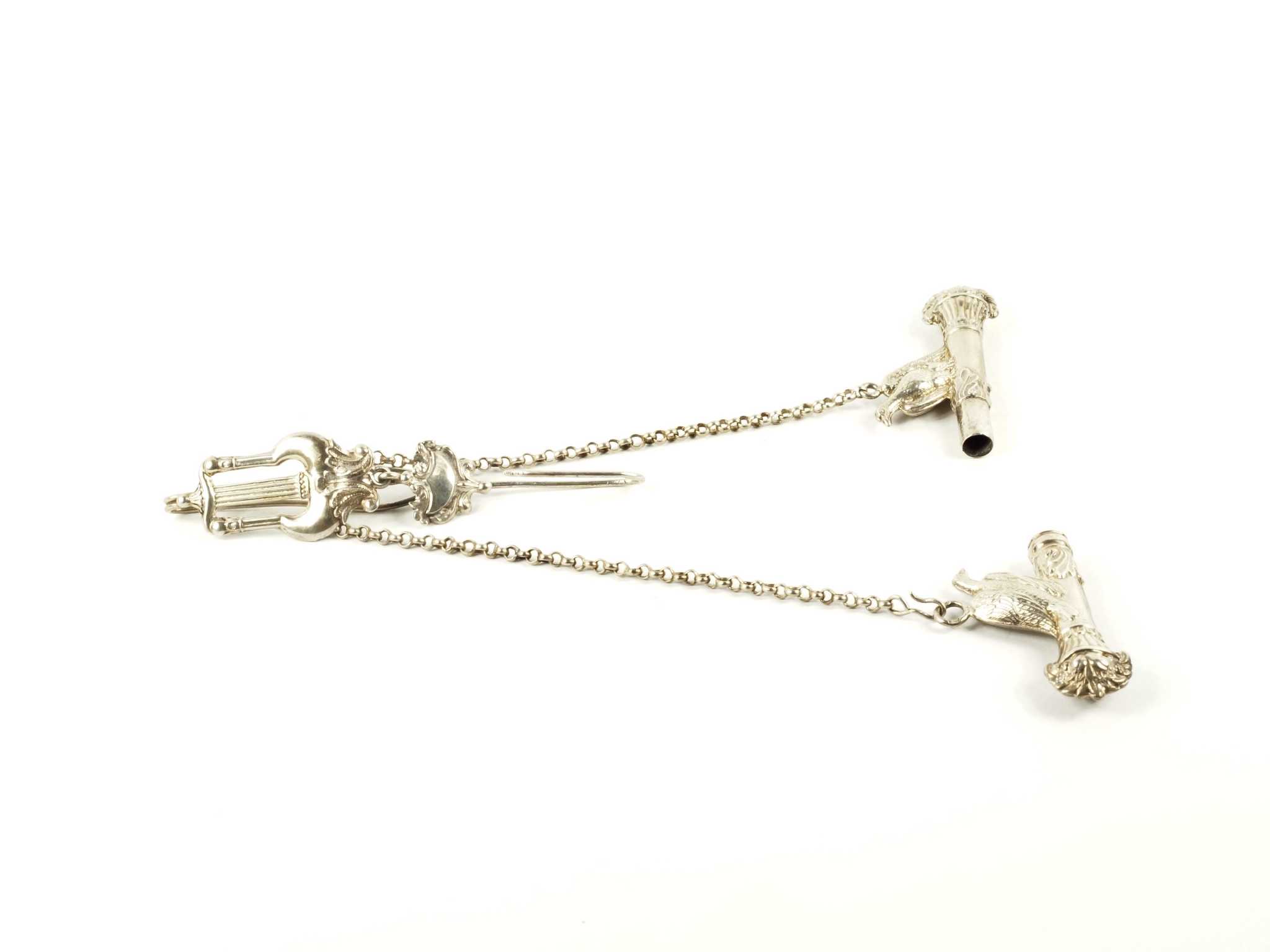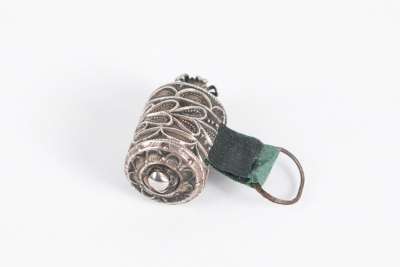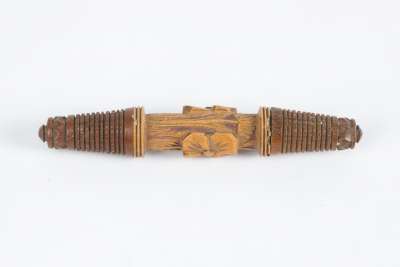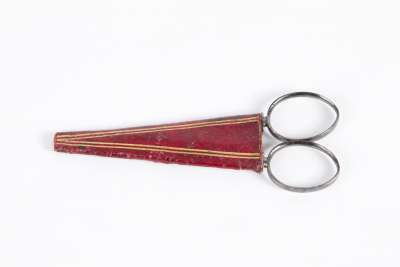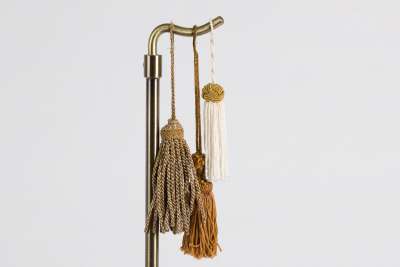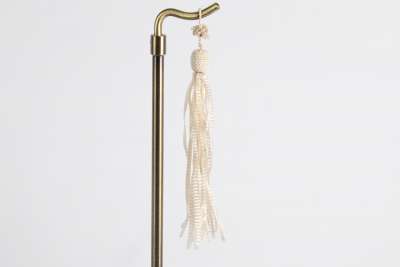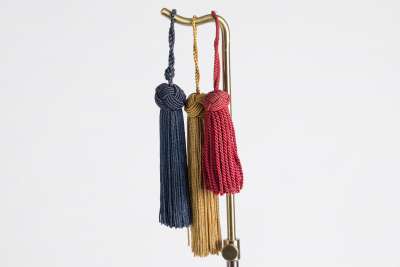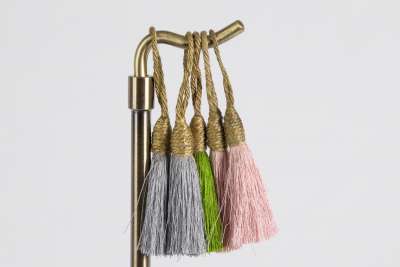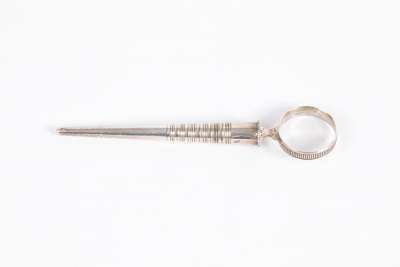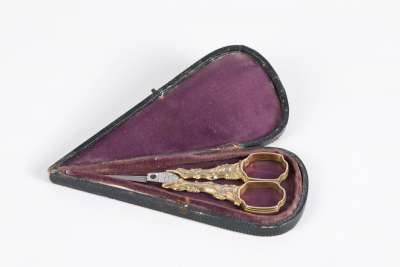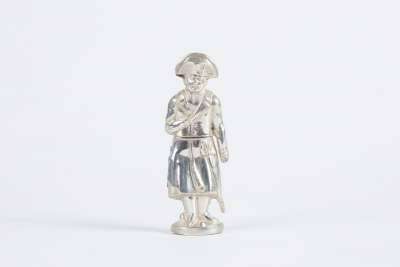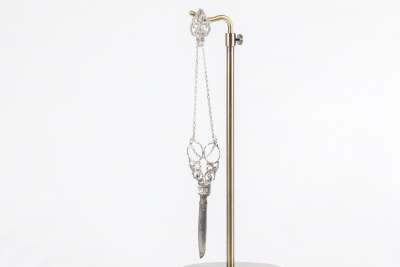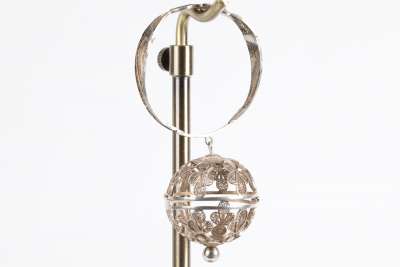A silver needle sheath and wool chatelaine designed to loop onto the belt of lady’s skirt. The chatelaine has a curved silver loop for holding the yarn thread, and two chains, connected to two knitting needle sheaths keeping the stitches on the needle. Hallmark is hard to distinguish but most likely Dutch. Circa 1820-1850.
Condition: Good with wear consistent with age and use.
Dimensions: Weight 20gm, Length 9cm, Height 21cm
